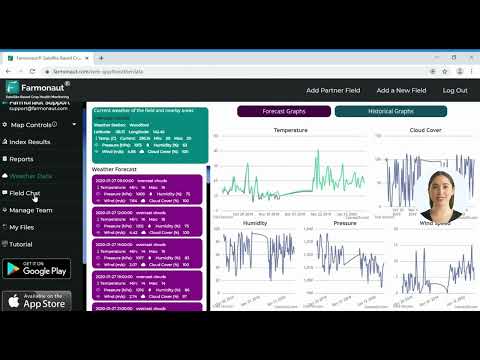Revolutionizing Enterprise Growth: Mastering API Management in the AI Era for Digital Transformation
“90% of enterprises struggle with API sprawl, hindering digital transformation efforts in the AI era.”
In the rapidly evolving landscape of enterprise technology, API management has emerged as a critical cornerstone for digital transformation and growth. As we navigate the AI era, organizations are faced with unprecedented challenges and opportunities in managing their digital assets. At the forefront of this revolution is the need for robust, cloud-scale API management solutions that can address the complexities of modern enterprise architecture while enabling AI-driven innovation.
In this comprehensive exploration, we’ll delve into how cutting-edge API management strategies are reshaping the enterprise landscape, integrating security best practices, automation, and data management capabilities to unlock the full potential of digital assets. We’ll examine how organizations can leverage API governance to fuel revenue growth, accelerate business outcomes, and gain a competitive edge in the AI-powered economy.
The Rise of API Management in the AI Era
As we witness the exponential growth of AI technologies, the role of APIs in facilitating seamless data access, system integration, and autonomous decision-making has become more crucial than ever. The proliferation of APIs, while enabling unprecedented connectivity and functionality, has also given rise to the challenge of “API sprawl” – a phenomenon that can overwhelm teams, create chaos, and introduce significant security risks if left unchecked.
Recent research by IDC highlights the magnitude of this trend: organizations with GenAI-enhanced applications and services in production have approximately five times more APIs than those not yet investing significantly in GenAI. This staggering statistic underscores the urgent need for sophisticated API management solutions that can scale with the demands of AI-driven enterprises.

The Critical Role of API Management in Digital Transformation
API management is no longer just about controlling access to data and services; it has evolved into a strategic imperative for organizations aiming to thrive in the digital economy. Here’s why effective API management is becoming a cornerstone for competitive advantage:
- Enhancing Discoverability: As the number of APIs grows, making them easily discoverable becomes crucial for developers and systems to utilize them effectively.
- Ensuring Security: With the increased attack surface that comes with API proliferation, robust security measures are essential to protect sensitive data and maintain compliance.
- Enabling Scalability: Cloud-scale API management solutions allow businesses to handle growing volumes of API calls and data transfers seamlessly.
- Driving Innovation: By providing a structured approach to API development and deployment, organizations can foster innovation and rapid prototyping of new services.
- Facilitating Integration: API management platforms serve as a bridge between legacy systems and modern cloud-native applications, enabling smoother digital transformation journeys.
As Shari Lava, Senior Research Director of AI and Automation at IDC, aptly puts it, “APIs have become the backbone of AI-driven innovation, enabling seamless interaction between AI models, agents, and enterprise systems. Effective API management is no longer optional — it is critical for organizations to ensure security, scalability, and governance while reducing complexity and API sprawl.”
Cloud-Scale API Management: A New Paradigm
The advent of cloud-scale API management platforms marks a significant leap forward in addressing the challenges of the AI era. These platforms offer several key advantages:
- Infinite Scalability: Cloud-native solutions can dynamically scale to meet the demands of AI-powered applications and services.
- Enhanced Performance: Distributed architectures and edge computing capabilities ensure low-latency API access globally.
- Integrated AI Capabilities: Many modern APIM platforms incorporate AI for anomaly detection, traffic optimization, and predictive analytics.
- Comprehensive Governance: Centralized control and monitoring of APIs across multiple environments and gateways.
These capabilities are crucial for enterprises looking to leverage APIs as strategic assets in their digital transformation initiatives. By adopting cloud-scale API management solutions, organizations can effectively manage the complexity of their API ecosystems while remaining agile and innovative.
API Security Best Practices in the AI Era
As APIs become more central to business operations and AI integration, securing them has never been more critical. Here are some best practices for API security in the age of AI:
- Authentication and Authorization: Implement robust OAuth 2.0 and OpenID Connect protocols for secure API access.
- Rate Limiting and Throttling: Protect against DDoS attacks and API abuse through intelligent traffic management.
- Data Encryption: Ensure end-to-end encryption for data in transit and at rest.
- AI-Powered Threat Detection: Utilize machine learning algorithms to identify and respond to potential security threats in real-time.
- Regular Security Audits: Conduct thorough and frequent assessments of API security posture.
By adhering to these security best practices, organizations can mitigate risks associated with API exposure while enabling the seamless integration necessary for AI-driven innovation.
AI-Driven API Innovation: Unlocking New Possibilities
The synergy between API management and AI technologies is opening up new frontiers for innovation. Here are some ways in which AI is transforming API management:
- Intelligent API Design: AI-powered tools can analyze usage patterns and suggest optimizations for API design and documentation.
- Automated API Testing: Machine learning algorithms can generate comprehensive test cases and identify potential issues before deployment.
- Dynamic API Composition: AI can facilitate the creation of composite APIs on-the-fly, based on specific user requirements or context.
- Predictive Scaling: AI models can forecast API traffic patterns and automatically adjust resources to maintain optimal performance.
These AI-driven capabilities are not just enhancing the efficiency of API management; they’re fundamentally changing how organizations approach API strategy and implementation.
“API management platforms can boost revenue growth by up to 25% through improved data accessibility and integration.”
Enterprise API Governance: Balancing Innovation and Control
As organizations scale their API ecosystems, establishing a robust governance framework becomes paramount. Effective API governance ensures that APIs align with business objectives, comply with regulatory requirements, and maintain consistent quality standards. Key components of enterprise API governance include:
- API Lifecycle Management: Implementing processes for API design, development, testing, deployment, and retirement.
- Version Control: Managing multiple versions of APIs to support backward compatibility and smooth transitions.
- Access Control and Monetization: Defining and enforcing policies for API access, usage limits, and monetization strategies.
- Performance Monitoring: Continuously tracking API performance metrics and setting SLAs for reliability and responsiveness.
- Documentation and Developer Experience: Maintaining comprehensive, up-to-date API documentation and fostering a positive developer experience.
By implementing a comprehensive API governance strategy, enterprises can strike the right balance between fostering innovation and maintaining control over their digital assets.

API Integration Platforms: The Backbone of Digital Ecosystems
In the era of digital transformation, API integration platforms have emerged as the connective tissue that binds disparate systems, applications, and data sources. These platforms offer several key benefits:
- Unified Data Access: Centralizing access to data from various sources, enabling a holistic view of business operations.
- Rapid Application Development: Accelerating the creation of new applications and services by leveraging existing APIs.
- Ecosystem Expansion: Facilitating partnerships and collaborations through secure, controlled API sharing.
- Legacy System Modernization: Bridging the gap between legacy systems and modern cloud-native applications.
By leveraging API integration platforms, organizations can create robust digital ecosystems that drive innovation, improve operational efficiency, and enhance customer experiences.
The Role of API Management in Powering GenAI Applications
As Generative AI (GenAI) continues to revolutionize industries, the role of API management in supporting these advanced applications becomes increasingly crucial. Here’s how API management is facilitating the growth of GenAI:
- Data Accessibility: Providing secure, efficient access to large datasets required for training and running GenAI models.
- Model Integration: Facilitating the seamless integration of GenAI models into existing enterprise systems and workflows.
- Scalability: Ensuring that API infrastructure can handle the high-volume, real-time requests typical of GenAI applications.
- Governance and Ethics: Implementing controls to ensure responsible use of GenAI technologies in line with regulatory and ethical standards.
As organizations increasingly adopt GenAI technologies, robust API management will be essential for harnessing their full potential while mitigating associated risks.
Managing API Sprawl: Strategies for Success
As organizations embrace digital transformation and AI technologies, the proliferation of APIs can lead to significant challenges. Here are strategies to effectively manage API sprawl:
- API Cataloging: Implementing a centralized repository for all APIs, making them easily discoverable and reusable.
- API Standardization: Establishing and enforcing standards for API design, documentation, and implementation across the organization.
- API Lifecycle Management: Implementing processes for the entire API lifecycle, from creation to retirement.
- API Analytics: Utilizing advanced analytics to gain insights into API usage, performance, and business value.
- API Rationalization: Regularly reviewing and consolidating redundant or underutilized APIs to reduce complexity.
By implementing these strategies, organizations can maintain control over their API landscape while continuing to innovate and scale their digital initiatives.
API Management for Enterprise Growth: Realizing the Business Value
Effective API management is not just a technical necessity; it’s a driver of significant business value. Here’s how API management contributes to enterprise growth:
- New Revenue Streams: Enabling the monetization of data and services through well-managed APIs.
- Accelerated Innovation: Facilitating rapid prototyping and deployment of new products and services.
- Improved Customer Experiences: Enabling seamless, omnichannel experiences through integrated APIs.
- Operational Efficiency: Streamlining business processes through better system integration and automation.
- Partner Ecosystem Expansion: Fostering collaboration and co-innovation with external partners through secure API sharing.
By leveraging API management as a strategic asset, enterprises can unlock new growth opportunities and gain a competitive edge in the digital marketplace.
The Future of API Management: Trends and Predictions
As we look to the future, several trends are shaping the evolution of API management:
- Decentralized API Management: Moving towards a more distributed model of API governance to support edge computing and microservices architectures.
- API-First Design: Adopting an API-first approach to product development, prioritizing API design from the outset.
- Event-Driven APIs: Increasing adoption of event-driven architectures for real-time data processing and reactive systems.
- AI-Augmented API Management: Further integration of AI capabilities for automated API design, testing, and optimization.
- API Ecosystems: Growth of industry-specific API ecosystems facilitating collaboration and innovation within sectors.
Organizations that stay ahead of these trends and adapt their API management strategies accordingly will be well-positioned to thrive in the evolving digital landscape.
API Management Maturity Model
| Maturity Level | API Strategy | Security & Governance | AI Integration | Business Impact |
|---|---|---|---|---|
| Basic | Ad-hoc API creation | Basic authentication | Limited AI integration | Minimal API reuse (5-10%) |
| Emerging | Defined API guidelines | API gateway implementation | AI-assisted API monitoring | Improved efficiency (10-15% cost reduction) |
| Established | API-first approach | Comprehensive security policies | AI-driven API analytics | New revenue streams (5-10% growth) |
| Advanced | API ecosystem development | Automated compliance checks | AI-powered API design and testing | Significant business transformation (15-25% revenue growth) |
| Optimized | API as a product | Proactive threat mitigation | Full AI integration in API lifecycle | Market leadership (25%+ revenue growth, high innovation rate) |
Conclusion: Embracing API Management for Digital Transformation
As we’ve explored throughout this article, mastering API management is crucial for organizations looking to thrive in the AI era and drive digital transformation. By implementing robust API governance, leveraging cloud-scale solutions, and embracing AI-driven innovation, enterprises can unlock the full potential of their digital assets and accelerate business growth.
The journey towards API management maturity is ongoing, requiring continuous adaptation to emerging technologies and market demands. Organizations that invest in developing a comprehensive API strategy, prioritize security and governance, and leverage the power of AI in their API management practices will be well-positioned to lead in the digital economy.
As we look to the future, the role of API management in enabling innovation, fostering collaboration, and driving business value will only continue to grow. By embracing these principles and technologies, enterprises can build the foundation for sustainable growth and competitive advantage in the rapidly evolving digital landscape.
FAQ: API Management in the AI Era
Q: What is API management, and why is it important in the AI era?
A: API management involves the processes of creating, publishing, documenting, and analyzing APIs in a secure environment. In the AI era, it’s crucial for enabling seamless integration between AI systems and enterprise applications, managing the increased complexity of data flows, and ensuring security and scalability as AI adoption grows.
Q: How does cloud-scale API management differ from traditional approaches?
A: Cloud-scale API management offers infinite scalability, enhanced global performance through distributed architectures, integrated AI capabilities for optimization and security, and comprehensive governance across multiple environments. This makes it better suited to handle the demands of AI-driven applications and services.
Q: What are the key security considerations for API management in AI-powered systems?
A: Key security considerations include robust authentication and authorization mechanisms, data encryption, AI-powered threat detection, regular security audits, and implementing proper rate limiting and throttling to prevent API abuse and DDoS attacks.
Q: How can organizations effectively manage API sprawl?
A: To manage API sprawl, organizations should implement API cataloging, establish standardization practices, enforce lifecycle management processes, utilize API analytics for insights, and regularly rationalize their API portfolio to reduce redundancy and complexity.
Q: What role does API management play in powering GenAI applications?
A: API management is crucial for GenAI applications by providing secure and efficient access to large datasets, facilitating seamless integration of AI models into existing systems, ensuring scalability for high-volume requests, and implementing governance controls for responsible AI use.
Q: How can API management drive business value and enterprise growth?
A: API management drives business value by enabling new revenue streams through API monetization, accelerating innovation and time-to-market for new products, improving customer experiences through integrated services, enhancing operational efficiency, and facilitating ecosystem expansion through partner collaborations.
Q: What are some emerging trends in API management?
A: Emerging trends include decentralized API management for edge computing support, API-first design approaches, the adoption of event-driven APIs, increased AI integration in API lifecycle management, and the growth of industry-specific API ecosystems.
Earn With Farmonaut: Affiliate Program
Earn 20% recurring commission with Farmonaut’s affiliate program by sharing your promo code and helping farmers save 10%. Onboard 10 Elite farmers monthly to earn a minimum of $148,000 annually—start now and grow your income!
For more information on our services:
Download our mobile apps:
Access our web app:







